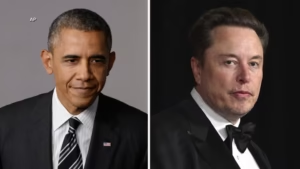The Changing Language of Emojis
Emojis have become an essential part of digital communication, evolving from simple emoticons into a complex system of symbols that convey tone, mood, and intent. However, as language and culture shift, so do the meanings attached to these symbols. One of the most surprising linguistic shifts in recent years is the perception of the classic smiley face emoji () among Generation Z. What was once a friendly and positive symbol is now being interpreted by younger users as passive-aggressive, condescending, or even sinister.
Why Does Gen Z Find the Smiley Face Sinister?
At first glance, the smiley face emoji seems innocent and cheerful. So why do many Gen Z users feel uneasy about it? The answer lies in context and digital tone interpretation.
1. The Evolution of Online Communication
Text-based communication lacks vocal tone and facial expressions, making it susceptible to misunderstandings. Older generations often use emojis to compensate for this lack of tone, while younger generations, who have grown up with digital messaging, have developed their own nuanced interpretations. To Gen Z, the smiley face emoji can feel unnatural and forced, particularly when used in professional or formal interactions.
2. Overuse in Corporate and Professional Settings
Many Gen Z workers have reported feeling uncomfortable when receiving a smiley emoji from their boss or colleagues. To them, it doesn’t feel like a genuine expression of friendliness, but rather a subtle way to mask displeasure or disappointment. Instead of seeing “” as a warm sign-off, they may perceive it as “I’m being nice, but I’m actually annoyed.”
For example, a simple message like:
“Please submit your report by the end of the day “
…can be interpreted as “You better submit the report on time, or else.”
3. The Shift Toward Minimalism in Digital Communication
Gen Z’s texting style favors efficiency and authenticity. Rather than using emojis to convey tone, they often rely on punctuation (or the lack of it) to create mood. A period at the end of a message can already signal finality or seriousness, so adding an emoji can come off as excessive or even sarcastic.
For instance, where a Millennial might type:
“Thanks ”
A Gen Z user might simply write:
“Thanks.”
The latter feels more direct and honest, while the former might be read as an insincere or patronizing attempt to soften the message.
The Rise of ‘New’ Friendly Emojis
Since the smiley face emoji has taken on a negative connotation among younger users, Gen Z has started favoring other symbols to express warmth and friendliness.
1. The Melting Face ()
This emoji conveys awkwardness, self-deprecation, or an attempt to lighten the mood without seeming fake. It’s a great way to express “Oops” or “I tried.”
2. The Pleading Face ()
Often used to show sincerity or affection, this emoji feels more heartfelt than the traditional smiley face.
3. The Skull ()
Though originally meant to signify death, the skull emoji is now widely used to indicate laughter or an extreme reaction, replacing “LOL” in many contexts.
4. The Sparkles (✨)
Sparkles have become a go-to emoji for softening messages without sounding sarcastic. A simple “Thank you ✨” is seen as more genuine than “Thank you .”
The Generational Emoji Divide
This shift in emoji perception has created a generational divide in digital communication. Millennials, who popularized emoji usage in the early 2010s, often see the smiley face as a friendly and harmless gesture. However, Gen Z—who have grown up with a greater sensitivity to digital tone—find it outdated and passive-aggressive.
This is similar to how punctuation usage differs between generations. A Millennial might end their messages with a period as a grammatical necessity, whereas a Gen Z user might see it as a sign of coldness or abruptness.
For example:
- Millennial: “Okay, see you later.”
- Gen Z: “Okay see you later” (no period for a softer tone)
Just as punctuation styles have changed, emoji interpretations continue to evolve based on cultural and generational shifts.
What This Means for Digital Communication
As workplace interactions increasingly move to digital platforms like Slack, Teams, and emails, understanding how different generations interpret emojis is crucial for avoiding miscommunication.
Tips for Bridging the Emoji Gap:
- Be Mindful of Context: If you’re communicating with a younger colleague, avoid using the smiley face emoji in situations where it might be perceived as passive-aggressive.
- Use More Neutral Emojis: Instead of , consider using or ✨ for a more modern and friendly touch.
- When in Doubt, Skip the Emoji: Sometimes, a simple and straightforward text message is the best way to communicate without risking unintended connotations.
- Adapt and Evolve: Language and digital communication are always changing. Staying open to new interpretations and styles can help maintain positive interactions across generations.
Conclusion
What was once a universal sign of friendliness has now become a misunderstood symbol in digital communication. While Millennials and older generations still see the smiley face emoji as warm and welcoming, Gen Z interprets it as passive-aggressive, insincere, or even sinister. This shift highlights the importance of adapting to changing digital language norms and being mindful of how different age groups perceive emojis. Whether you’re texting a friend, sending a work email, or messaging a colleague, understanding the evolving emoji landscape can help ensure your intent is clear—and that no one misreads your well-intended smile as something more menacing.







